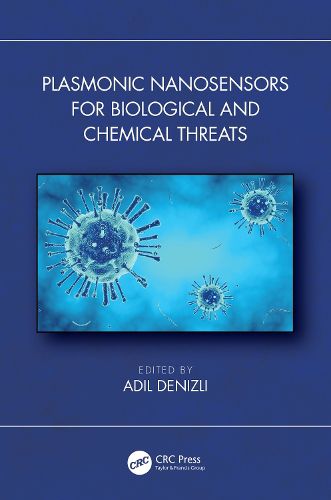Readings Newsletter
Become a Readings Member to make your shopping experience even easier.
Sign in or sign up for free!
You’re not far away from qualifying for FREE standard shipping within Australia
You’ve qualified for FREE standard shipping within Australia
The cart is loading…






Biological and chemical warfare agents, including viruses, bacteria, and explosive and radioactive compounds, can induce illness or death in humans, animals, and plants. Plasmonic nanosensors as detection tools of these agents offer significant advantages, including rapid detection, sensitivity, selectivity, and portability. This book explores novel and updated research on different types of plasmonic nanosensors for analysis of biological and chemical threat agents. It covers a brief theory of plasmonic nanosensors, summarizes the state-of-art in the molecular recognition of biological and chemical threat agents, and describes the application of various types of nanosensors in the detection of these threat agents.
This book:
Brings together recent academic research from an interdisciplinary approach including chemistry, biology, and nanotechnology Discusses current trends and developments Describes applications of a variety of different types of plasmonic nanosensors Explores outlooks and expectations for this technology
Showcasing the latest achievements in plasmonic nanosensors, this book will appeal to researchers in materials, chemical, and environmental engineering as well as chemistry interested in exploring the application of sensors to support environmental monitoring and global health.
$9.00 standard shipping within Australia
FREE standard shipping within Australia for orders over $100.00
Express & International shipping calculated at checkout
Biological and chemical warfare agents, including viruses, bacteria, and explosive and radioactive compounds, can induce illness or death in humans, animals, and plants. Plasmonic nanosensors as detection tools of these agents offer significant advantages, including rapid detection, sensitivity, selectivity, and portability. This book explores novel and updated research on different types of plasmonic nanosensors for analysis of biological and chemical threat agents. It covers a brief theory of plasmonic nanosensors, summarizes the state-of-art in the molecular recognition of biological and chemical threat agents, and describes the application of various types of nanosensors in the detection of these threat agents.
This book:
Brings together recent academic research from an interdisciplinary approach including chemistry, biology, and nanotechnology Discusses current trends and developments Describes applications of a variety of different types of plasmonic nanosensors Explores outlooks and expectations for this technology
Showcasing the latest achievements in plasmonic nanosensors, this book will appeal to researchers in materials, chemical, and environmental engineering as well as chemistry interested in exploring the application of sensors to support environmental monitoring and global health.